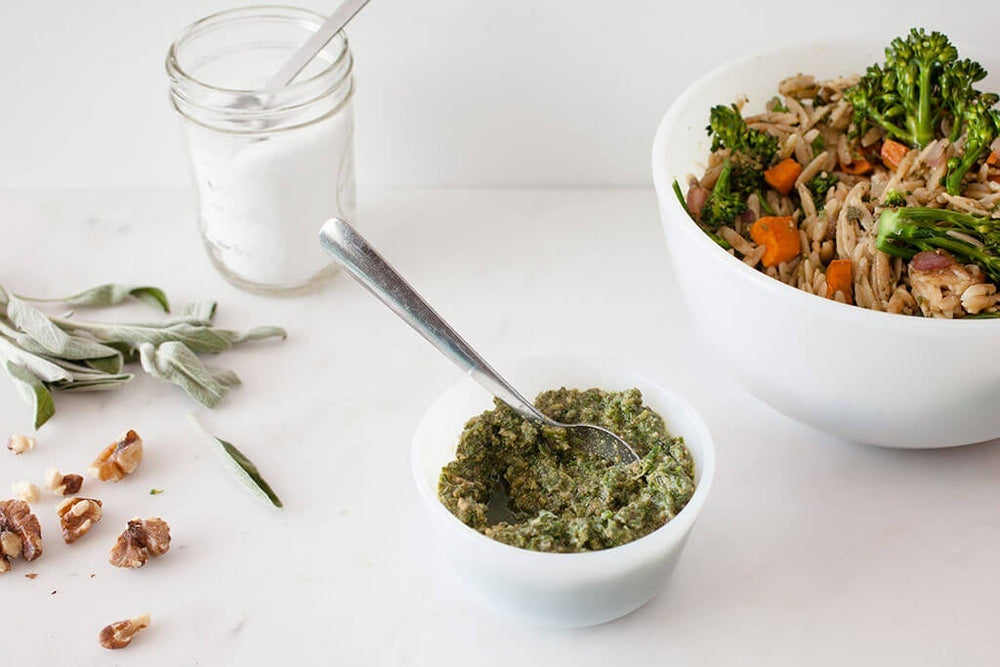Pesto is typically made with basil, but this version uses fresh sage leaves for a bold, well-rounded twist on the classic. Try it on pasta, pork, or veal for a deliciously different topping. We tested it mixed into orzo pasta with sautéed sweet potatoes, broccoli, and red onion, plus a splash of balsamic vinegar—delicious!
Yield: ¾ cup pesto
Ingredients
- 1 cup sage leaves
- 4 coarsely chopped green onions
- ¼ cup of roasted walnuts
- 1 peeled large clove garlic
- ½ tsp kosher salt
- ½ cup of good olive oil
Instructions
- Place sage, onions, walnuts, garlic, and salt in a food processor, adding a small amount of the olive oil.
- Turn on processor, letting it run while you slowly add the remainder of the olive oil. Continue to process until smooth.

Featured Ingredient: Sage
Typically used to flavor Thanksgiving stuffing, sage provides a lovely fragrance and flavor to a variety of dishes, especially when leaves are sautéed before adding. The leaves are also lovely when added to a decorative arrangement or used for garnishes. The flowers are edible and have a slightly milder flavor than the leaves. Use them for decoration, or sprinkled over pasta or cakes. While cooks appreciate the distinctive taste and scent of sage, gardeners and landscapers also enjoy its velvety, evergreen foliage, and delicate blooms. Consider planting and growing sage in a container with rosemary, basil, and other Mediterranean herbs for a fragrant mix in your garden. Let us teach you how to grow sage!





 Herbs
Herbs
 Vegetables
Vegetables
 Fruit
Fruit
 Flowers
Flowers
 Succulents
Succulents


